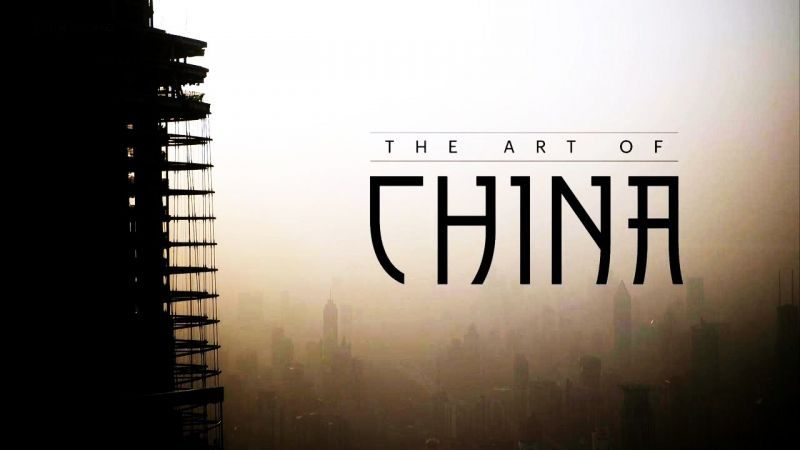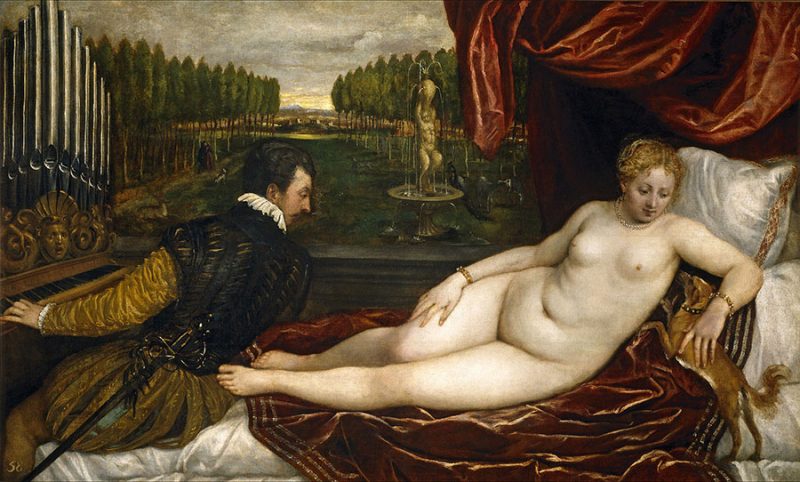Art of China – Andrew Graham-Dixon combines an appreciation of Chinese art with a journey of discovery around the country, seeking to understand the works in their historical context. Andrew Graham-Dixon is a historian and presenter who explores the art of China in a three-part BBC documentary series. He travels across the country and through time, from the ancient terracotta army to the contemporary art scene, to reveal the rich and diverse artistic heritage of China. He also examines how Chinese art reflects its history, culture, and identity, as well as how it influences and interacts with the rest of the world.
Art of China – Part 1
Andrew Graham-Dixon pieces together the spectacular recent discoveries of ancient art that are re-defining China’s understanding of its origins. He comes face to face with an extraordinary collection of sophisticated alien-like bronze masks created nearly four millennia ago and travels to the Yellow River to explore the tomb of a warrior empress where he discovers the origins of calligraphy. Always seeking to understand art in its historical context, Andrew visits the tomb of the first emperor and comes face to face with the Terracotta Army. He ends his journey in western China, looking at the impact of the arrival of Buddhism from India on the wondrous paintings and sculptures of the Dunhuang caves
Art of China – Part 2
Andrew Graham-Dixon travels to the Yellow Mountains in southern China to understand the power of Chinese landscape painting. The period from the 10th to the 15th century – from the Song to the Ming dynasties – was the golden age of art in China. Andrew discovers an emperor so in love with art and beauty that he neglected to rule his country and scholar artists who fled the Mongol invasion to immerse themselves in nature, combining wondrous landscape painting and calligraphy. While Europe was still in the Dark Ages, Chinese art was being reborn.
Art of China – Part 3
Andrew Graham-Dixon charts the journey from imperial to modern – the glorious rise and calamitous fall of China’s last dynasty. Rulers were so entranced by the spell of western art that they failed to notice the rise of western dominance, with disastrous consequences. The subsequent profound identity crisis saw China’s artists struggle with outside influence. It was an age of crisis, which ultimately led to bloody revolution and rebirth. After tyrant Mao’s Cultural Revolution and Tiananmen Square, does its new art reveal a different side to the modern China we think we know?
Andrew Graham-Dixon
Art of China is a three-part documentary series hosted by Andrew Graham-Dixon, exploring the history and cultural significance of Chinese art. The series covers a span of more than 3,000 years, from the ancient bronzes of the Shang dynasty to the contemporary art scene of the 21st century. Along the way, Graham-Dixon visits some of the most iconic and influential sites and artworks in China, such as the Terracotta Army, the Forbidden City, the Great Wall, the Mogao Caves, and the Shanghai Biennale. He also meets with artists, curators, historians, and collectors who share their insights and perspectives on Chinese art and culture.
The first episode, “The Golden Age”, focuses on the classical period of Chinese art, from the Zhou dynasty to the Tang dynasty. Graham-Dixon explores how art reflected the political and religious changes that shaped China during this time, such as the rise and fall of empires, the emergence of Confucianism and Buddhism, and the development of calligraphy and poetry. He also examines how art expressed the ideals and values of Chinese civilization, such as harmony, balance, beauty, and morality.
The second episode, “The Age of Revolution”, traces the impact of foreign invasions and internal rebellions on Chinese art from the Song dynasty to the Qing dynasty. Graham-Dixon shows how art responded to the challenges and opportunities that came with contact with other cultures, such as the Mongols, the Europeans, and the Japanese. He also reveals how art reflected the social and cultural diversity of China during this period, such as the flourishing of urban life, commerce, and entertainment in cities like Beijing and Suzhou.
The third episode, “Inventing a Nation”, examines the role of art in shaping modern China from the 19th century to the present day. Graham-Dixon explores how art was influenced by the tumultuous events that marked China’s transition from a traditional empire to a communist state to a global power. He also investigates how art expressed the aspirations and frustrations of Chinese people in different eras, such as the nationalist movement, the Cultural Revolution, and the economic reforms. He also looks at how contemporary artists are challenging and reinventing Chinese art in a global context.
Conclusion Art of China
Andrew Graham-Dixon’s Art of China provides a profound exploration of the vast and diverse artistic heritage of China. By delving into more than 3,000 years of history, the series uncovers not only the beauty and intricacy of Chinese art but also the ways in which it has been inextricably tied to the nation’s political, cultural, and spiritual evolution. Through his meticulous journeys across time and space, from the grand sculptures of the Terracotta Army to the vibrant contemporary art scene, Graham-Dixon reveals how Chinese art is a reflection of the country’s shifting identity and values.
At the core of the series is an appreciation for the way Chinese art is deeply embedded in historical context. The first episode uncovers the classical period, where the ideals of harmony, balance, and moral philosophy shaped artistic endeavors. The early Chinese masterpieces, such as calligraphy, landscape painting, and sculpture, were not merely aesthetic expressions but also symbols of the intellectual, spiritual, and political climates of their time. By visiting the ancient burial sites, exploring the influence of Confucianism, and understanding the origins of Buddhism in China, Graham-Dixon shows how Chinese art reflected a harmonious balance between human beings and the natural world, as well as between earthly life and the afterlife.
The second episode takes us to the turbulent times from the Song to Qing dynasties, where internal rebellions and foreign invasions influenced the evolution of Chinese art. The landscape paintings of this period, with their serene beauty, often reflected an artist’s escape from the chaos of the world into nature. Graham-Dixon skillfully illustrates how Chinese artists adapted to new cultural influences while preserving their own traditions. He also shows how art became a medium for social commentary during periods of unrest, with artists subtly critiquing political turmoil or exploring new themes introduced by foreign cultures, such as the Mongol and European presence in China.
By the third episode, Art of China ventures into the modern era, where Chinese art undergoes a dramatic transformation in response to the collapse of the imperial system and the rise of the Communist state. Graham-Dixon charts how Chinese art grappled with the profound identity crisis brought about by western influence and internal revolutions. The effects of Mao’s Cultural Revolution, in particular, left indelible marks on artistic expression, with many artists struggling to reconcile their heritage with the demands of a new, rigid political ideology. Yet, Graham-Dixon also highlights the resilience and rebirth of Chinese art, as modern and contemporary artists today are reimagining what it means to be Chinese in a globalized world.
Ultimately, Art of China succeeds in revealing the intricacies of China’s art history while also contextualizing its role in shaping the nation’s broader cultural identity. By the end of the series, the viewer understands that Chinese art is not a monolith but a dynamic, evolving force that continues to respond to the ever-changing tides of history. From the mystical bronze masks of the Shang dynasty to the bold and provocative works of contemporary artists, Graham-Dixon shows how Chinese art serves as both a mirror of the past and a canvas for the future.
This documentary series emphasizes the deep connections between art, history, and society in China. It explores how Chinese artists have continuously redefined their work in response to internal and external pressures while maintaining a sense of continuity with their ancient traditions. Furthermore, Art of China reminds us that art is not just an aesthetic pursuit but a powerful vehicle for cultural expression, capable of transcending time, political boundaries, and historical upheavals. In doing so, the series offers viewers not only a glimpse into the artistic masterpieces of China but also a deeper understanding of the country’s soul.
F.A.Q. Art of China
Q.: What is the central theme of the Art of China documentary series by Andrew Graham-Dixon?
A.: The Art of China series centers on exploring the rich and diverse history of Chinese art over 3,000 years. It traces how art has mirrored the country’s political, cultural, and religious evolution, from ancient bronze sculptures to contemporary works, while also highlighting its global influence.
Q.: How does Andrew Graham-Dixon approach Chinese art in the documentary?
A.: Andrew Graham-Dixon approaches Chinese art by placing it within its historical and cultural context. His method combines art appreciation with a journey through China, exploring significant historical sites and works, while connecting the art to the country’s broader political, social, and spiritual transformations.
Q.: What are the key periods of Chinese art covered in the series?
A.: The series covers several key periods of Chinese art, including ancient art from the Shang dynasty, the golden age of landscape painting during the Song and Ming dynasties, and the turbulent transition to modernity, reflecting the impacts of Western influence, revolution, and cultural change.
Q.: How does the series depict the impact of Buddhism on Chinese art?
A.: The series explores the significant impact of Buddhism on Chinese art, particularly in the first episode where Graham-Dixon examines Buddhist sculptures and paintings in the Dunhuang caves. These works demonstrate how Buddhist ideas from India were integrated into Chinese art and culture, leading to stunning religious artworks.
Q.: How is contemporary Chinese art portrayed in Art of China?
A.: In the third episode, contemporary Chinese art is portrayed as both a reflection of China’s recent history and an exploration of modern identity. The series highlights how today’s artists grapple with the legacy of events like the Cultural Revolution, while also engaging with global artistic movements and expressing new perspectives on modern Chinese society.




